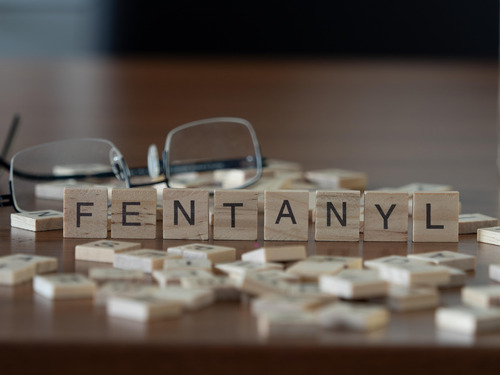At Carolina Recovery, we are dedicated to providing comprehensive addiction treatment services in a supportive and healing environment. Our fully accredited center offers personalized programs for alcohol and drug rehabilitation, including medically supervised detoxification and medication-assisted treatment. We understand the complexities of addiction and co-occurring mental health disorders, and our holistic approach aims to address the unique needs of each individual. Our mission is to guide you toward lasting recovery and a renewed, sober life.
Fentanyl withdrawal symptoms can begin quickly after the last dose and often reach a high level of intensity. As a powerful synthetic opioid, fentanyl creates strong physical dependence in a short time. This leads to a withdrawal process that is often more severe than with other opioids like heroin or prescription painkillers. Common symptoms include anxiety, muscle aches, nausea, and insomnia, but many patients also experience serious complications that require medical support. Without proper treatment, the risk of relapse and overdose increases.
In this blog, we explain the stages of fentanyl withdrawal, outline common symptoms, and review effective treatment options, including why visiting our Raleigh opioid rehab center can provide the support and medical care needed for a safer, more stable recovery.
What Is Fentanyl, and Why Is It So Addictive?
Fentanyl is a synthetic opioid that is highly addictive and widely involved in the ongoing opioid epidemic. Understanding its potency and impact on the body is key to grasping why fentanyl withdrawal symptoms are often severe.
Fentanyl Is a Powerful Synthetic Opioid
Fentanyl is a man-made drug used for pain relief. It is much stronger than heroin and many other opioids. Medical professionals prescribe it for severe pain, especially in patients with chronic pain or after surgery. However, it is also produced illegally and sold as a street drug, often mixed with other substances.
Fentanyl Binds Tightly to Opioid Receptors
Fentanyl attaches to opioid receptors in the brain and central nervous system. These receptors control pain and emotion. When fentanyl binds to them, it causes intense pain relief and a feeling of euphoria. These effects make it easy for opioid dependence to develop.
High Potency Increases Risk of Addiction
Fentanyl is about 50 to 100 times stronger than morphine. Even small doses can lead to addiction, especially in patients treated with higher doses over time. People may build tolerance quickly, leading to more frequent use and increased risk of opioid use disorder.
Illicit Fentanyl Use Fuels the Opioid Epidemic
Illicit fentanyl has been a major driver of opioid overdose deaths. It is often found in counterfeit pills and mixed with heroin or other opioids without the user’s knowledge. This unpredictability increases the danger and contributes to severe withdrawal symptoms.
Repeated Use Changes Brain Function
Long-term fentanyl use alters the brain’s reward system. It affects mood, decision-making, and stress response. These changes make it hard for opioid dependent patients to stop using without help. Fentanyl withdrawal symptoms begin quickly when fentanyl leaves the body.
Fentanyl Withdrawal Symptoms: Timeline and Progression
Fentanyl withdrawal follows a clear timeline, starting with early symptoms and progressing to more severe effects. Understanding this timeline helps in planning safe and effective treatment.
Early Symptoms (First 6 to 24 Hours After Last Use)
Early withdrawal symptoms begin quickly after the last dose. These include anxiety, sweating, muscle aches, yawning, runny nose, and restlessness. Patients may also experience dilated pupils and mild gastrointestinal distress. These symptoms often signal the start of opioid withdrawal and can vary based on the patient’s history of fentanyl use and overall health.
Acute Phase (Day 1 to Day 3)
This is when fentanyl withdrawal symptoms peak. The body reacts strongly as it adjusts to the absence of opioids. Common symptoms include nausea, vomiting, diarrhea, stomach cramps, and chills. People may also have increased heart rate, high blood pressure, and insomnia. These severe symptoms are difficult to manage without medical help. Monitoring vital signs and using the Clinical Opiate Withdrawal Scale (COWS) is important during this stage.
Subacute Phase (Day 4 to Day 10)
Symptoms begin to fade but do not disappear. Fatigue, mood swings, irritability, and sleep problems often continue. Patients may still feel cravings and emotional distress. While physical discomfort decreases, psychological symptoms can remain strong. This phase can complicate treatment and increase the risk of relapse if support is lacking.
Post-Acute Withdrawal (Several Weeks or Longer)
Some patients experience post-acute withdrawal syndrome (PAWS). Symptoms include depression, anxiety, low energy, and trouble focusing. These symptoms may last weeks or even months. Post-acute symptoms are more common in people with long-term opioid use disorder. Managing this stage often requires continued support, therapy, and close medical supervision.
What Makes Fentanyl Withdrawal Different From Other Opioids?
Fentanyl withdrawal symptoms are often more intense than those from heroin or other opioids. This is due to fentanyl’s strength, speed of action, and how it interacts with the body.
Fentanyl Is Stronger and Faster-Acting
Fentanyl is much more potent than most opioids. It binds quickly and tightly to opioid receptors in the central nervous system. This fast action produces strong pain relief and euphoria. It also causes a faster buildup of opioid dependence. As a result, fentanyl withdrawal symptoms begin sooner and are often more severe.
Illicit Use Increases Risk and Symptom Severity
Illicit fentanyl is often mixed with other drugs without the user’s knowledge. This leads to unpredictable doses and effects. Many people tested positive for multiple substances when admitted for treatment. This increases withdrawal severity and complicates care. In these cases, withdrawal syndromes may involve symptoms from other opioids as well.
Rapid Tolerance Raises Withdrawal Intensity
Patients who use fentanyl regularly develop tolerance quickly. They need higher doses to feel the same effects. This cycle increases the body’s dependence on the drug. When use stops, symptoms of opioid withdrawal are stronger and longer-lasting. These include severe pain, gastrointestinal distress, and psychological symptoms.
Clinical Data Shows a Significant Difference
Studies show a statistically significant increase in withdrawal severity among patients treated for fentanyl use compared to heroin or prescription opioids. Clinicians use COWS scores and vital signs to track these differences. Patients with fentanyl dependence often need more intensive symptomatic treatment and longer detox periods.
More Support Is Needed for Safe Recovery
Due to the nature of fentanyl and the intensity of its withdrawal symptoms, medically supervised opioid withdrawal is recommended. Clinical practice supports the use of buprenorphine therapy and other treatments to reduce symptoms and improve patient outcomes. A strong support system and continued care are key to preventing relapse.
Treatment Options for Managing Fentanyl Withdrawal
Managing fentanyl withdrawal symptoms requires a structured approach using medical supervision, medication, and long-term support.
Medically Supervised Opioid Withdrawal
Supervised detox is the safest way to manage fentanyl withdrawal. Medical staff monitor vital signs, track COWS scores, and respond to complications. Patients with opioid use disorder often face severe symptoms that cannot be managed alone. Medically supervised opioid withdrawal reduces the risk of opioid overdose and improves treatment outcomes.
Buprenorphine and Methadone Therapy
Buprenorphine and methadone are FDA-approved medications used in opioid withdrawal treatment. They activate opioid receptors without producing strong euphoric effects. This helps reduce cravings and withdrawal severity. These medications are often started after early symptoms appear and are adjusted based on the patient’s response. Clinical experience shows better outcomes when these drugs are used correctly under supervision.
Symptomatic Treatment for Discomfort
In addition to opioid replacement therapy, symptomatic treatment helps control issues like nausea, anxiety, and insomnia. Common options include anti-nausea medication, sleep aids, and drugs for gastrointestinal distress. These treatments improve patient comfort during the acute phase and support progress in detox.
Behavioral Support and Counseling
Support groups and individual counseling help patients understand substance use disorders and develop coping skills. Mental health support is especially important during post-acute withdrawal. Behavioral therapies reduce relapse risk and provide long-term support for people recovering from fentanyl use.
Long-Term Treatment Planning
Fentanyl withdrawal is the first step in a longer process. Patients benefit from continued care after detox, including outpatient treatment, support groups, and medication management. A strong support system improves patient outcomes and helps prevent relapse. Treatment plans should be adjusted based on withdrawal severity, clinical opiate withdrawal scale results, and patient needs.
Take the First Step Towards Healing Today!
If you or someone you care about is struggling with fentanyl withdrawal, professional help can make all the difference. At Carolina Recovery, our Raleigh-based team offers medically supervised detox, evidence-based treatment options, and ongoing support tailored to each patient’s needs. We understand the challenges of opioid dependence and are committed to helping you manage symptoms safely and reduce the risk of relapse.
Schedule an appointment with us today at (812) 408-8842!







